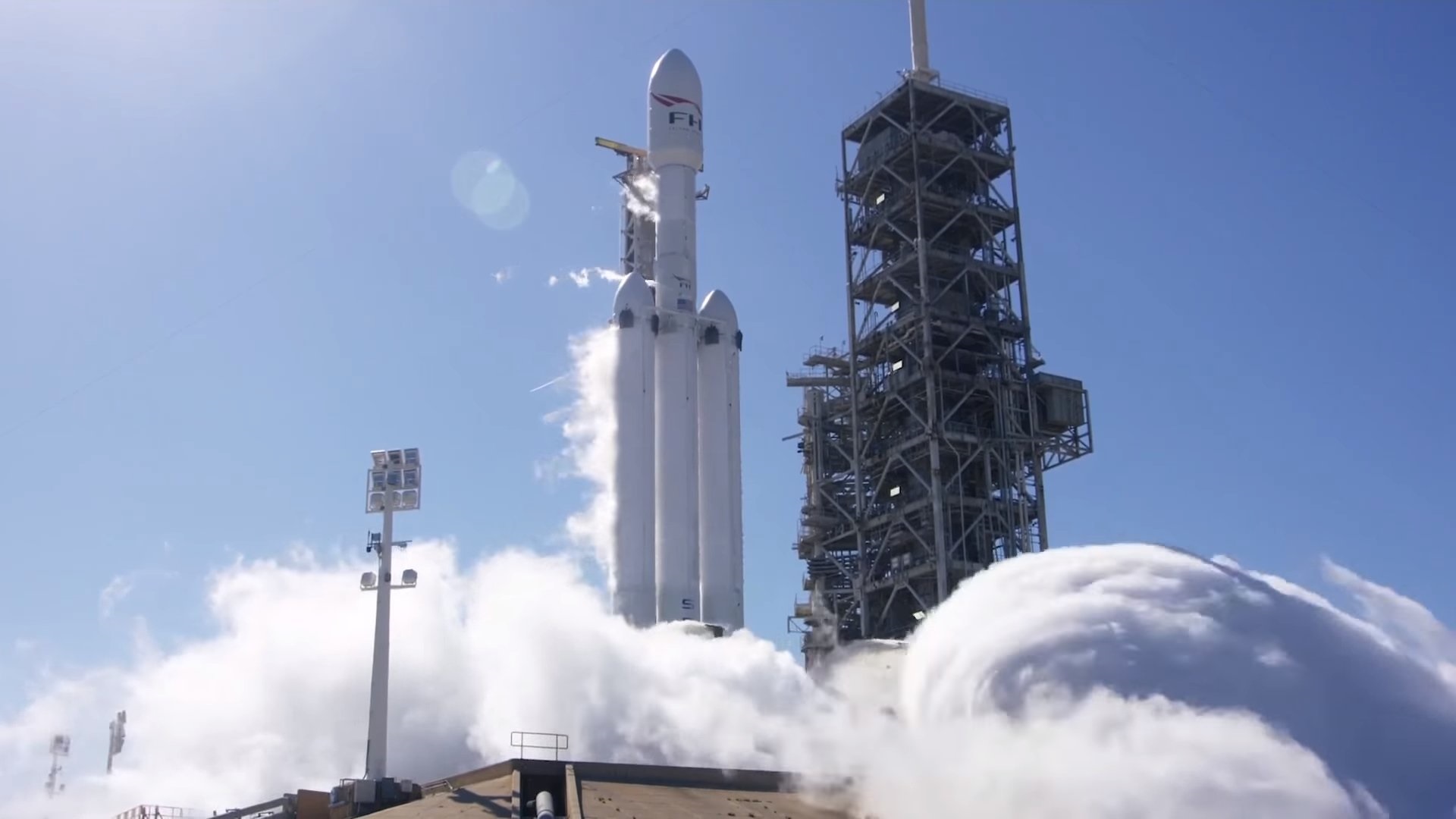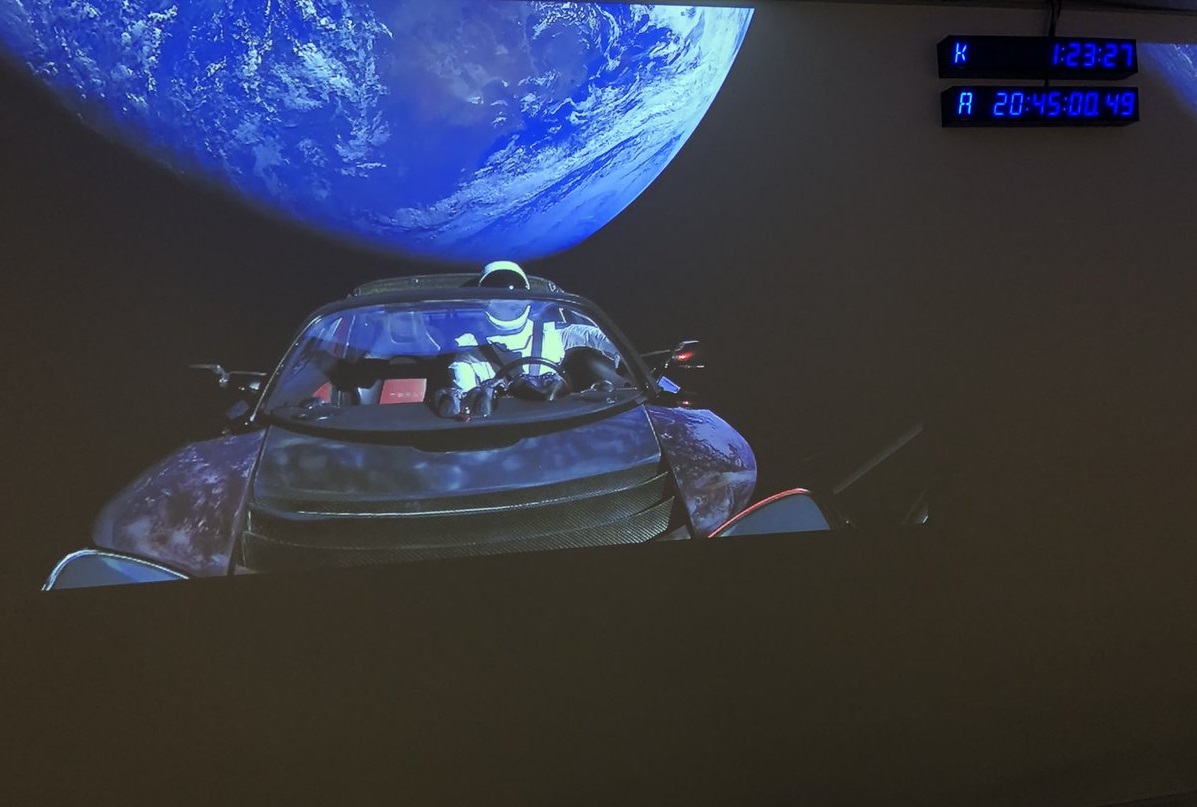SpaceX successfully launched the Falcon Heavy missile, but when landing there were problems

SpaceX successfully sent the rocket carrier Falcon Heavy in the first test flight. Despite the delay, the launch was successful, but with the return of accelerators there were problems.
Launching
Falcon Heavy was launched from Cape Canaveral on February 6 at 22:45 Kiev time (23:45 GMT). The launch vehicle is considered the world's largest cargo spacecraft. Consisting of three automatic accelerators and 27 engines, it is capable of putting into orbit 64 tons of cargo. When flying to Mars, this figure will significantly decrease and amount to 17 tons.
Electric Vehicle in Space
In the cargo compartment of the rocket, a test cargo was placed in the form of an electric vehicle Tesla Roadster. According to Mask, usually in such cases a barrel or other boring heavy thing is loaded. But the creators decided to add paint to the test and launched Tesla into the space.

Landing
After the cargo was put into orbit, two side accelerators successfully returned to Earth and landed on their platforms. But the central module missed a hundred meters and instead of landing on the platform crashed into the ocean at a speed of 500 km / h.
Studies in orbit
After entering the orbit of the planet, the cargo module must muffle the engines and fly by inertia for 6 hours. During this time, the unit will perform various experiments and maneuvers in space. After that, the engines must be launched remotely from Earth, and the module will go to Mars.
Future plans
In the near future, Falcon Heavy will make a couple of commercial flights and bring into orbit satellites for the cable channels Immarsat and Viasat, as well as a new satellite of Saudi Arabia. In the distant plans of the Mask send Falcon Heavy with people to the Moon and Mars, as well as with robots beyond the solar system.